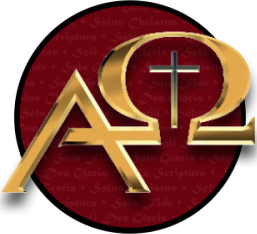The most valuable tool that I use when I study the gospels as a whole or just a single passage (“pericope”) is a synopsis. It is truly at arm’s reach from my desk. The concept of a synopsis is very simple. It is a format that arranges the gospel parallel stories, teachings, parables, etc. in parallel columns (hence, sun ‘together,’ opsis ‘seeing’). Here is a pdf example of two gospel pericopes. There are five good reasons to own a synopsis.
(1) You never have to ask yourself, “Is this story in Mark also found in Matthew, Luke, or John as well? Or “How does Luke’s account describe this same parable in Matthew?” A synopsis allows you to see the parallel accounts on a single page. Are you aware that the story of the feeding of the 5000 is the only miracle recorded in all four gospels? Again, a synopsis format conveniently lets you see all four accounts together and their different details and emphases. Another example, the story of Jesus calming the storm has Matthew’s account with Jesus saying, “O men of little faith.” Mark has “Have you no faith?” Luke has “Where is your faith?” Reading this story in a synopsis would make these differences observable.
(2) Learn the theological emphases of each gospel. Reading the gospels “vertically” is the most common way–Matthew through John, one at a time. But reading them “horizontally”–Matthew, Mark, Luke, John at the same time–will allow you to compare the theological differences with much more effectiveness because you are viewing the accounts together.
Indeed, we have to be careful not to read unwarranted theological hues that may not be there. It can be subjective to theorize why a writer “omitted” an entire pericope that the other writers “included” (or a “portion” of it). Synoptic analysis is often more an art than a science. But that is not to say that we cannot learn certain theological emphases if the proper principles are employed (e.g. genealogies of Jesus by Matthew and Luke). By the way, it may come to a surprise to many to learn that of all the gospel writers it is John who is most concerned with chronology and geographical location (a synopsis would point out this emphasis in John).
(3) To be aware of the distinctives in the gospel stories. Can you tell me which gospel account of the birth narrative contains the story of the “Wise Men”? Matthew or Luke’s account (or both)? Answer: only in Matthew. What about the “Shepherds out in the field keeping watch over their flock by night?” Answer: only in Luke’s account. (And Mark and John do not contain a birth narrative). If you use a synopsis, all these facts would be conspicuous on a single page!
(4) Read all four gospels in chronological sequence. Have you read the gospels before and noticed that the writers are often “inconsistent” with the chronology of events in the life of Jesus? That is not because they were careless and making mistakes in recalling the life of Jesus. Rather, they were more often concerned with thematic development than with a mere chronicle (and historicity for these ancient writers did not always require chronological sequence.)
Nevertheless, a synopsis organizes each pericope in chronological fashion as best as possible, which is very helpful when studying a particular passage and knowing which stage of Jesus’ ministry it unfolded. Indeed, there are some notorious pericopes and their sequence that scholars debate in respect to chronology and geography. But, all in all it’s convenient to have that framework. And in the synopsis that I am going to suggest you purchase, if you do not own one, there is an “Index of the Gospel Parallels.” It is worth the price of the book because at a bird’s eye view you can see all the headings of the gospel parallels in their chronological order along with their scripture references.
(5) Read a synopsis in one year by reading one pericope every day! By coincidence, the synopsis has 367 pericopes (That is, all four gospels combined contain 367 units.) If you read one pericope a day next year, plus two additional days (but it is a leap year), you will have read all 367 units of all four gospels in a full year.
The edition that I recommend for English is the Synopsis of the Four Gospels Edited by Kurt Aland. There is also a diglot edition of both Greek and English by Kurt Aland. And if you want to impress your friends at the next cocktail party and make them think you are really smart just ask them in a Latin accent if they own the latest Greek-only edition, Synopsis Quattuor Evangeliorum.
Quick addition from JRW: this is the edition we have been using in the adult Sunday School classes at PRBC for the past four years.



